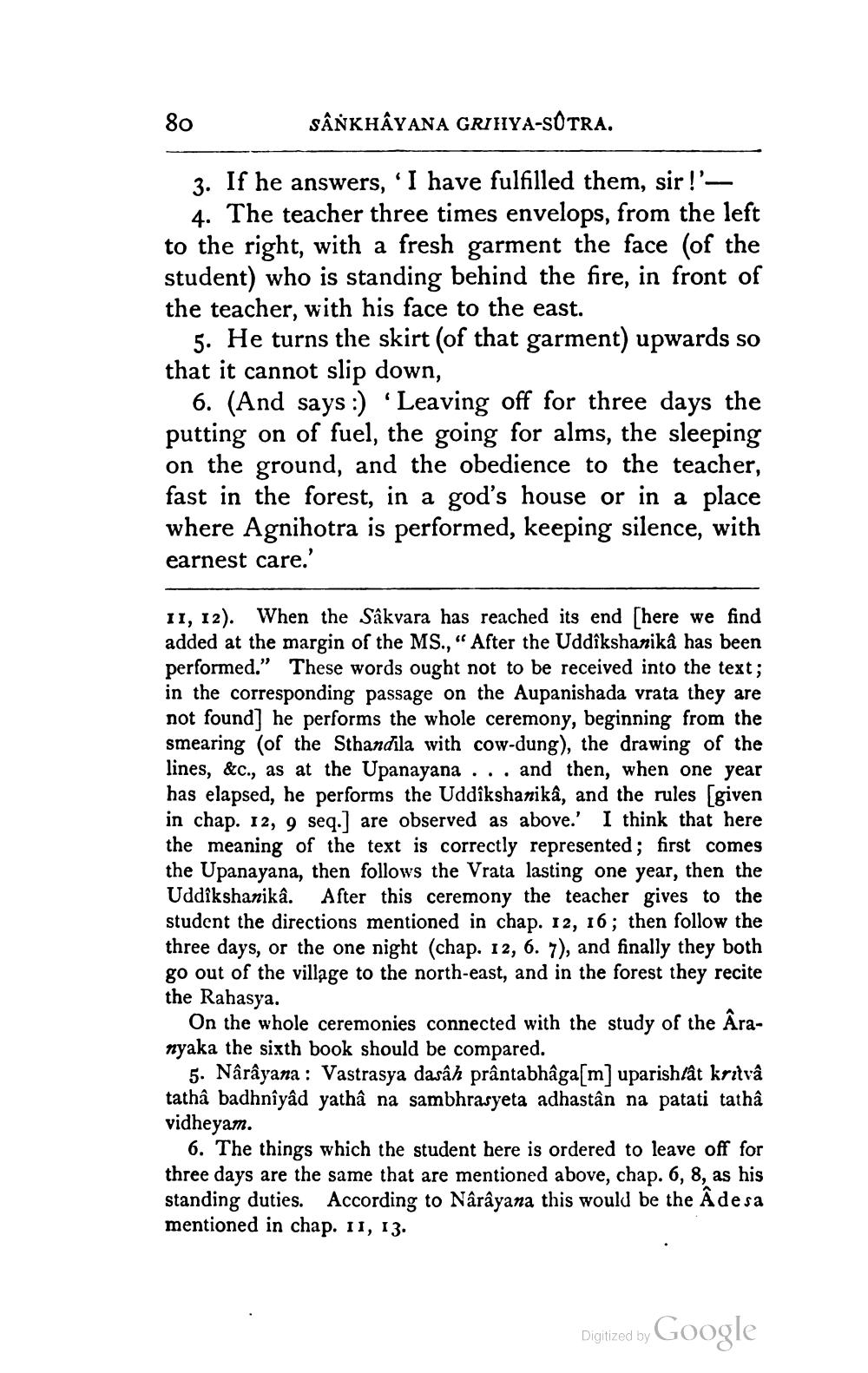________________
80
SÂNKHAYANA GRIHYA-SOTRA.
3. If he answers, 'I have fulfilled them, sir!'
4. The teacher three times envelops, from the left to the right, with a fresh garment the face (of the student) who is standing behind the fire, in front of the teacher, with his face to the east.
5. He turns the skirt (of that garment) upwards so that it cannot slip down,
6. (And says :) 'Leaving off for three days the putting on of fuel, the going for alms, the sleeping on the ground, and the obedience to the teacher, fast in the forest, in a god's house or in a place where Agnihotra is performed, keeping silence, with earnest care.'
11, 12). When the Sakvara has reached its end here we find added at the margin of the MS., "After the Uddikshanikâ has been performed." These words ought not to be received into the text; in the corresponding passage on the Aupanishada vrata they are not found] he performs the whole ceremony, beginning from the smearing (of the Sthandila with cow-dung), the drawing of the lines, &c., as at the Upanayana ... and then, when one year has elapsed, he performs the Uddîkshanika, and the rules [given in chap. 12, 9 seq.) are observed as above.' I think that here the meaning of the text is correctly represented; first comes the Upanayana, then follows the Vrata lasting one year, then the Uddîkshanikâ. After this ceremony the teacher gives to the student the directions mentioned in chap. 12, 16; then follow the three days, or the one night (chap. 12, 6. 7), and finally they both go out of the village to the north-east, and in the forest they recite the Rahasya.
On the whole ceremonies connected with the study of the Aranyaka the sixth book should be compared.
5. Nârâyana : Vastrasya dasâh prântabhậga[m] uparishlât kritva tathâ badhnîyâd yathâ na sambhrasyeta adhastân na patati tatha vidheyam.
6. The things which the student here is ordered to leave off for three days are the same that are mentioned above, chap. 6, 8, as his standing duties. According to Narayana this would be the Adesa mentioned in chap. II, 13.
Digitized by Google




